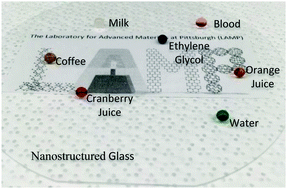Creating glasswing butterfly-inspired durable antifogging superomniphobic supertransmissive, superclear nanostructured glass through Bayesian learning and optimization†
Abstract
The creation of durable superomniphobic surfaces with optical functionality has been extremely challenging. Major challenges have included low optical transmission, low optical clarity, lack of scalable fabrication, condensation failure, and inability to self-heal. Inspired by recent research on the transmission advantages of the random nanostructures on the glasswing butterfly, we report on a strategy to create self-healing, random re-entrant nanostructured glass with high liquid repellency and antifogging properties with supertransmission (99.5% at 550 nm wavelength for double-sided glass) and superclarity (haze under 0.1%). Our approach to creating these random nanostructures is to utilize a multiobjective learning and Bayesian optimization approach to guide the experiments of glass substrate fabrication. The surface demonstrates static water and ethylene glycol contact angles of 162.1 ± 2.0° and 155.2 ± 2.2°, respectively. The glass exhibits resistance to condensation or antifogging properties with an antifogging efficiency more than 90% and demonstrates the departure of water droplets smaller than 2 μm. The surface can restore liquid-repellency after physical damage through heating for 15 minutes. We envision that these surfaces will be useful in a variety of optical applications where self-cleaning, antifouling, and antifogging functionalities are important.

- This article is part of the themed collection: A selection of 2019 articles


 Please wait while we load your content...
Please wait while we load your content...
